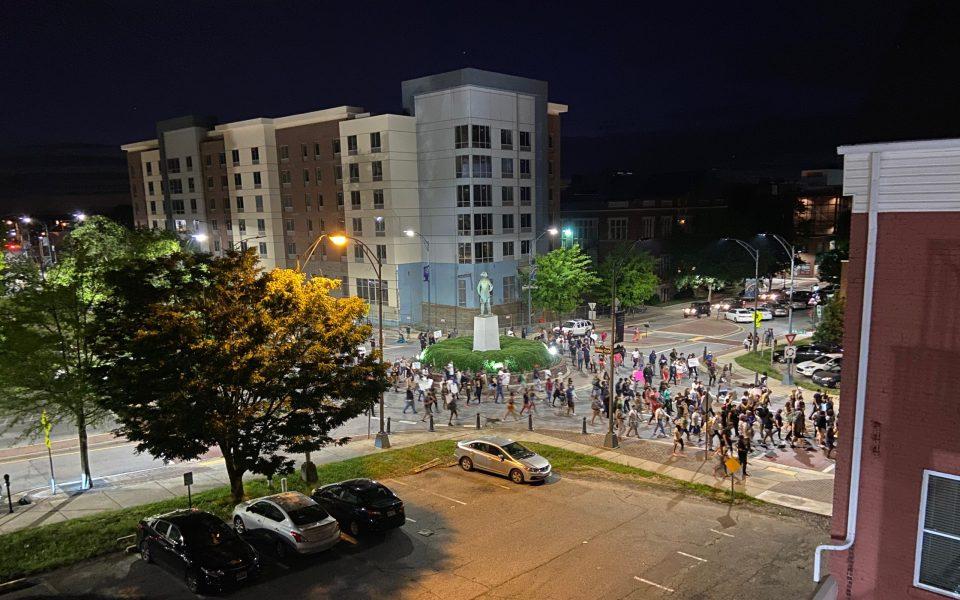
On Saturday night I posted up on South Elm Street near the Vivid Interiors shop, my Facebook livestream humming along with hearts, smileys and angry faces bubbling up on the screen.
Twenty yards to my right, 50 or so protestors were lined up against officers from the Guilford County Sheriff’s Department in full riot gear — shields, helmets, the whole deal. The protesters were angry — shouting at the police, pacing in front of them, expressing generations of pain against injustice while the cops silently accepted this criticism without breaking ranks, the whiff of pepper spray still in the air.
Twenty yards to my left, a different crowd had begun breaking windows on South Elm, some of them personally liberating T-shirts, shoes, skateboard decks and other merchandise that had been trapped behind glass at the shop called, ironically, Stolen. Bursts of crystalline showers punctuated the shouting and footfalls as more windowpanes fell.
In that moment during the Greensboro protests, there on the sidewalk, I understood both were expressing the same sentiment, each using a different mechanism.
I was out there because earlier in the day, I had been moved to tears by Associate Editor Sayaka Matsuoka’s live footage of the earlier protest, the one that marched down Gate City Boulevard and shut down Interstate 40 while Greensboro Police held traffic so no one got hurt. I was bringing her a phone charger so she could continue her coverage, but somehow ended up out there myself.
Something I knew about shoe-leather journalism but maybe had forgotten: It gets complicated on the ground, whether you’re covering a golf tournament, an election or a nationwide protest during a global pandemic. A hundred — a thousand! — events are happening all at once: beauty and terror, rage and fellowship, creation and destruction. And like the bible story about the blind men, we can only perceive one part of the elephant at a time.
When confronted with unknowable chaos, journalists fall back on their training. We’re here to document, not police; understand, not affect; relay, not relate; bear witness to events, not shape them. At our best, as we say, we are both the lantern and the mirror: shining light on the dark corners that must be exposed, creating accurate reflections to show us who we truly are. The best of us try to manage this without fear or favor, avoiding pre-set narratives and always seeking an objective truth. That’s why we love documents.
Another journalism maxim: Comfort the afflicted and afflict the comfortable.
On Saturday night in Greensboro, the power dynamic was not always clear. It gets complicated on the ground.
Join the First Amendment Society, a membership that goes directly to funding TCB‘s newsroom.
We believe that reporting can save the world.
The TCB First Amendment Society recognizes the vital role of a free, unfettered press with a bundling of local experiences designed to build community, and unique engagements with our newsroom that will help you understand, and shape, local journalism’s critical role in uplifting the people in our cities.
All revenue goes directly into the newsroom as reporters’ salaries and freelance commissions.


“we are both the lantern and the mirror” – I like this
I didn’t make it up. It’s something journalists say.
Nice Brian. Really nice.